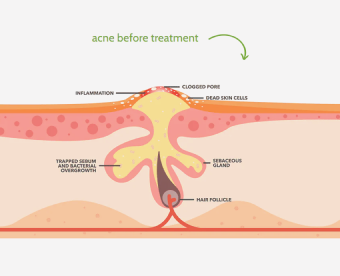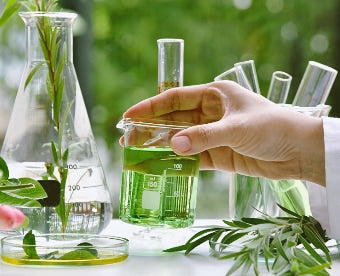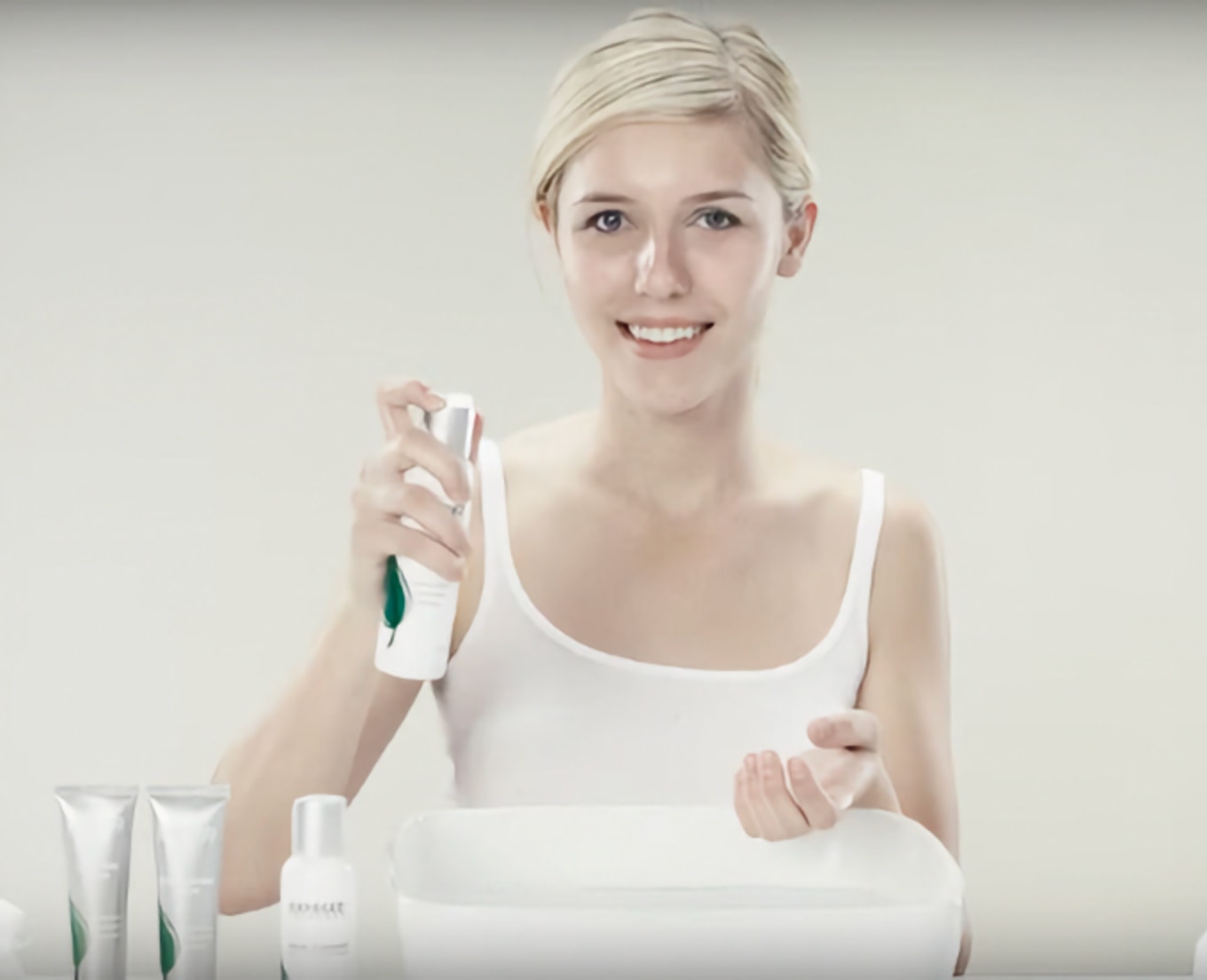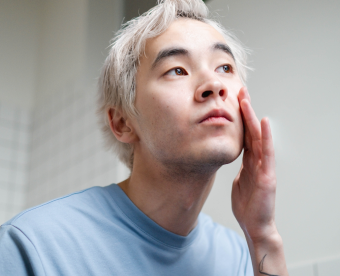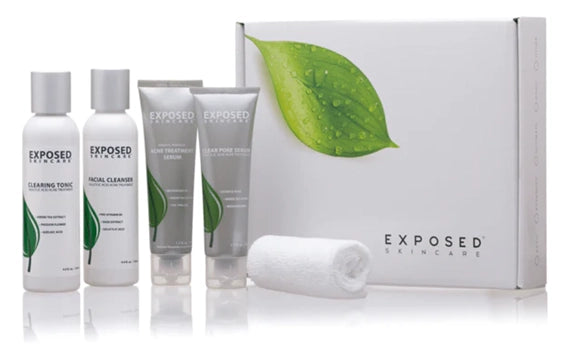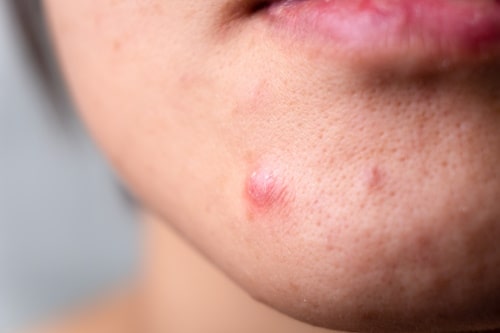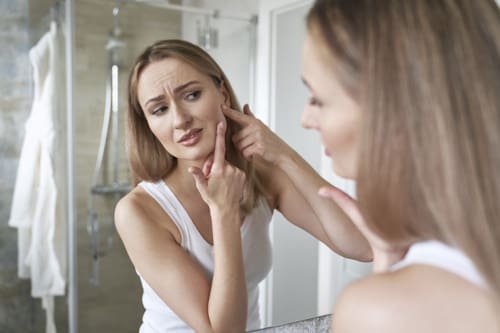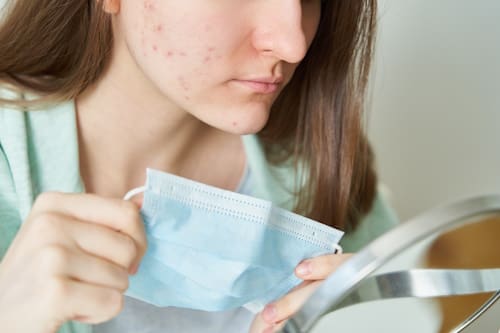The human skin can be a canvas of mystery and wonder, reflecting our health, beauty, and individuality. However, this canvas can sometimes become a battlefield, with acne often emerging as the primary contender.
Understanding the types of acne, such as cystic acne vs. hormonal acne, is crucial in finding an effective solution. This article aims to demystify these types of acne and shed light on the distinctive symptoms, causes, and treatment options.
Also read: How to choose the best acne treatment
Biggest Take-Aways:
- Differentiating between hormonal and cystic acne is crucial for effective treatment. While hormonal fluctuations influence both, they vary in symptoms, causes, and treatment strategies.
- The overproduction of sebum and hormonal imbalances often result in acne. Maintaining a skincare regimen that includes gentle cleansing and moisturizing can help manage these factors.
- Comprehensive treatment strategies such as topical retinoids, creams, birth control pills, or isotretinoin are often used to treat acne, depending on the individual's skin type and the severity of the acne.
- Exposed Skin Care is an effective treatment option for various acne types, offering benefits such as oil production regulation, hormonal acne management, and customized treatment plans.

Understanding Acne
What is Acne?
Acne is a skin condition that occurs when hair follicles become clogged with oil and dead skin cells. This clog results in different types of acne, including blackheads, whiteheads, and more severe forms like cystic acne and hormonal acne. While acne is commonly associated with adolescence, adult acne is also prevalent.
The Complexities of Acne
Why Does Acne Occur?
Many factors may contribute to the breakout of acne. This includes an overproduction of sebum (an oil-like substance produced by sebaceous glands), hormonal fluctuations, inflammation, and acne-causing bacteria.
The interplay between sebum production and acne bacteria inflames the skin, leading to different types of acne.
Cystic Acne vs. Hormonal Acne: A Closer Look
What is Cystic Acne?
Cystic acne is a severe form of acne that occurs when a pore becomes fully blocked, causing oil and dead skin cells to build up within the hair follicles. This clog leads to the formation of a cyst, a large and painful lump beneath the surface of the skin.
Cystic Acne: Symptoms and Causes
Cystic acne causes bumps that are large, red, and painful to touch. These cysts may rupture, leading to inflammation and scar tissue. The causes of cystic acne can vary, but it is often related to an overproduction of sebum, which hormonal changes or imbalances can also trigger.
Cystic Acne Treatment Options
Treatments for cystic acne may involve a combination of topical creams, isotretinoin (a powerful acne medication), and a skincare regimen that includes gentle cleansing and moisturizing products. A spot treatment approach is often ineffective for cystic acne since it forms deep within the skin.

What is Hormonal Acne?
Hormonal acne, also known as adult acne, is a type of acne that's often triggered by fluctuations in hormone levels. Hormonal acne affects adults between the ages of 20 and 50, though it can occur at any age.
Hormonal Acne: Symptoms and Causes
Hormonal acne appears predominantly around the lower face and jawline. Unlike cystic acne, hormonal acne often presents as small, tender bumps that aren’t oil-free or inflamed cysts.
Causes of hormonal acne include hormonal fluctuations due to menstrual cycles, polycystic ovary syndrome (PCOS), and increased androgen levels.
Hormonal Acne Treatment Options
Treating hormonal acne often involves a combination of topical treatments and systemic medications. Topical retinoids and creams that help reduce sebum production can be effective. Additionally, birth control pills have been shown to stabilize hormonal fluctuations and hence treat acne.
Navigating the Differences: Cystic Acne vs Hormonal Acne
Hormonal and cystic acne differ primarily in their causes, symptoms, and treatment approaches. While hormonal changes influence both forms of acne, they manifest differently and may require different treatment strategies. Understanding these differences is critical in dealing with acne effectively.
Symptoms: Hormonal Acne and Cystic Acne
In cystic acne, the acne is far more painful and presents as large, inflamed cysts that can lead to scarring. Conversely, hormonal acne breakouts are often characterized by smaller, tender bumps around the lower face and jawline.

Causes: Hormonal Acne vs Cystic Acne
Hormonal changes or imbalances may trigger hormonal and cystic acne. However, cystic acne often results from clogged pores due to the overproduction of sebum and dead skin cells.
Hormonal acne, on the other hand, is often caused by hormonal fluctuations linked to menstrual cycles or conditions like PCOS.
Treatment: Cystic Acne and Hormonal Acne
While both types of acne require a combination treatment approach, they differ in specifics. Treating hormonal acne often involves stabilizing hormone levels, using topical retinoids and creams.
On the other hand, cystic acne treatment often involves powerful medications like isotretinoin coupled with a skincare routine to keep the skin clean and moisturized.
The Benefits of Using Exposed Skin Care for Acne Management
Exposed Skin Care is a comprehensive solution that targets various kinds of acne, from hormonal to severe acne. It's designed to manage the factors that cause acne and is a powerful treatment option for those struggling with skin problems.
Here are some key benefits of Exposed Skin Care:
-
Regulation of Oil Production: Exposed Skin Care effectively regulates the amount of oil your skin produces. This reduces the likelihood of clogged pores that could lead to pimples and cystic acne.
-
Hormonal Acne Management: Hormonal acne, often caused by hormone fluctuations, may worsen without proper care. Exposed Skin Care is formulated to address these hormonal acne causes and treat such breakouts.
-
Targeting Fungal Acne: Unlike many products that aren’t oil-free, Exposed Skin Care is free of oil and harsh chemicals, making it ideal for combating fungal acne.
-
Customized Treatment Plans: Every individual's acne journey is unique. Exposed Skin Care offers tailored treatment plans to manage acne around specific areas or types of acne, like hormonal or cystic acne.
Remember, acne can also fluctuate due to many factors, including diet, stress, and male hormone changes. Therefore, staying consistent with your skincare regimen is crucial to seeing improvements
Conclusion
Understanding the different types of acne, such as hormonal and cystic acne, is essential in selecting an effective treatment plan. Hormonal fluctuations often cause hormonal acne and can cause discomfort when it occurs. Likewise, cystic acne occurs deep within the skin, causing painful cysts that can lead to scarring if not properly treated.
Various acne treatment options are available, including Exposed Skin Care. This regimen is designed to manage different types of acne, including hormonal and cystic, by regulating oil production and addressing the hormonal imbalances that often lead to these types of acne.
Its oil-free components effectively treat acne without exacerbating it, offering a unique solution for those struggling with various types of acne.
While the hormonal imbalances and interactions between oil and acne-causing bacteria could make anyone susceptible to acne, understanding how these factors contribute to acne's occurrence can empower individuals to manage their condition better.
In the end, remember that everyone's acne journey is unique. Keep learning, stay consistent with your skincare routine, and remain open to trying different treatments like Exposed Skin Care to manage and treat acne effectively.
FAQs
Is hormonal acne and cystic acne the same?
No, while hormonal imbalances can trigger hormonal and cystic acne, they differ in their symptoms, causes, and treatment strategies.
Can hormonal acne be severe like cystic acne?
While hormonal acne tends to be less severe than cystic acne, it can still cause discomfort and impact a person's self-esteem.
Can you have both hormonal and cystic acne?
Yes, it is possible to have both hormonal and cystic acne concurrently, especially if there's a significant hormonal imbalance.
Is there a way to prevent cystic acne or hormonal acne?
While acne can be difficult to prevent entirely due to its link to hormonal fluctuations and genetic factors, maintaining a consistent skincare regimen can help manage the symptoms.
What are the best treatment options for hormonal and cystic acne?
The best treatment options for hormonal and cystic acne vary depending on the individual's skin type and the severity of the acne. Topical retinoids, birth control pills, and isotretinoin are commonly used, along with a consistent skincare routine.

